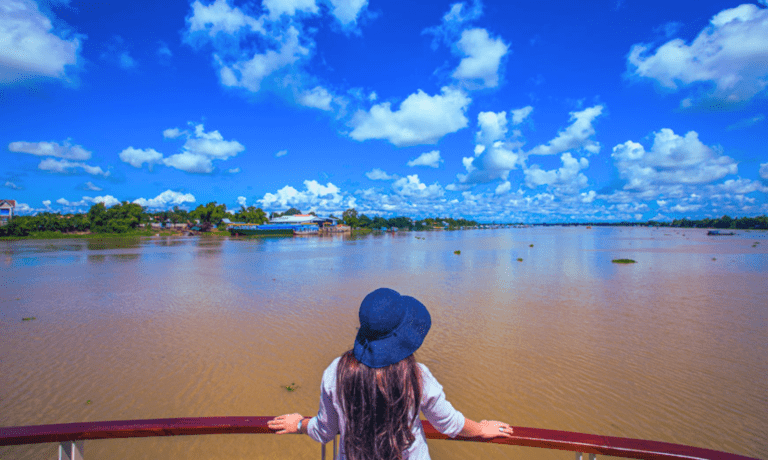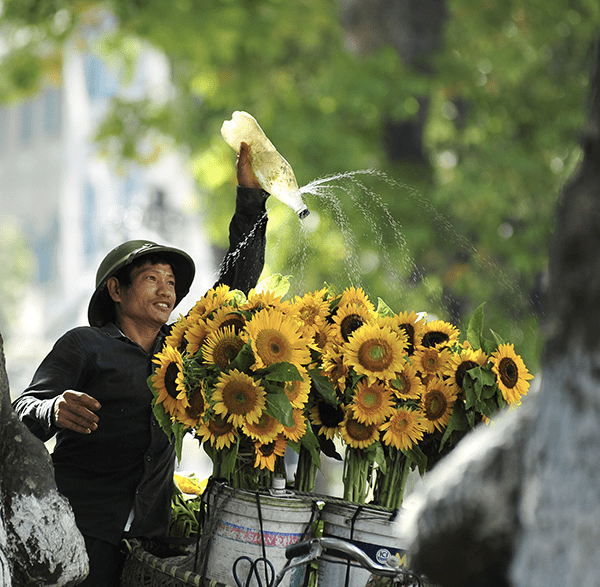Planning is a crucial component of any trip, and before visiting Vietnam, particularly if it’s your first time, there are a few things you should be aware of. Although there won’t be anything to worry about in Vietnam, it’s always a good idea to know what to expect before traveling to a new place. Before you visit Vietnam, here are top 10 things to know about to help you organize the ideal vacation and spend more time enjoying this interesting nation rather than worrying about it.
1/ Insurance for travel should be taken into consideration
Although it’s generally safe to go to Vietnam, it’s still a good idea to be ready for the unexpected. And that extends beyond simple stealing. The following are just a few examples of how your trip to Vietnam might be seriously ruined: food illness, an accident while participating in an adventurous activity, losing your possessions, or even missing a flight.
Check out some tips and information about travel insurance here.
2/ The appropriate time of year to visit
Vietnam is a vast nation with a north to south length of more than 1600 kilometers. The optimum time to visit Vietnam is crucial to organizing the ideal trip, even though the weather there may not be top of your list of concerns.
The nation experiences a tropical monsoon environment with high humidity all year long and erratic weather that can include everything from typhoons to regular downpours to oppressive temperatures. Additionally, the weather might change greatly depending on where you go and when you go.
However, if you want to see a little bit of everything, spring (March to April) or fall are the ideal times to visit Vietnam (September – December). Expect good weather over the majority of the nation during these months.
3/ Remember to bring your visa
The majority of nations, with the exception of some European passport holders, including those from the UK, France, and Germany, require a visa to enter Vietnam. You should count yourself lucky if you come from one of these nations since you may enter Vietnam for a period of 15 days without a visa.
The likelihood is strong that you will need to apply for a visa in advance for the remaining. South African nationals must apply in person at the nearest Vietnam embassy, but residents of several other nations can do so online (learn more about it here or use iVisa to handle everything for you). It’s definitely a mission, but the effort will be worthwhile since you’ll get to see one of Asia’s most breathtaking locations!
4/ Purchase a local SIM card
Get a local SIM card or pocket wifi whether you’re planning a 5-day Vietnam trip or staying a little longer (especially if you are a first-time visitor to Vietnam).
Although free (and extremely fast) internet is probably available in most hotels and upscale restaurants, having constant access to your favorite travel applications like Google Maps, Google Translate, and Grab Taxi might help you avoid unneeded worry.
Getting a SIM card as soon as you arrive is the most convenient method to stay connected while traveling. You may make a booking here or go directly to one of the many merchants there. Alternatively, to avoid the fuss, get one delivered right to your accommodation.
5/ Learn some basic Vietnamese terms.
Vietnamese is the official language in Vietnam, however English is extensively spoken in tourist areas. Even while it’s doubtful that you’ll have any language difficulties in the larger cities, it’s always a good idea to be familiar with the fundamentals. Here are some essential words and phrases that can enhance your vacation significantly and maybe even wow a few locals:
| Hello | Xin chào |
| Goodbye | Tạm biệt |
| Thank you | Cảm ơn |
| Sorry | Xin lỗi |
| Please | Làm ơn |
| Yes | Đúng |
| No | Không |
| How much is this? | Cái này bao nhiêu tiền? |
| Please help me | Làm ơn giúp tôi |
| Where is the bathroom? | Nhà vệ sinh ở đâu |
Learn more about Vietnamese phrases via this video here.
6/ Prepare some cash with you
Make sure you have extra cash on hand because, in general, cash is king in Vietnam, especially if you want to visit markets or quiet restaurants. However, the majority of hotels, tour companies, and better restaurants do take debit or credit cards, but keep in mind that service fees may apply.
Finding an ATM won’t be too difficult if you run out of cash. However, not all banks accept international cards, so it’s advisable to try one of the larger locations that takes Visa or Mastercard, like HSBC and CitiBank. Additionally, bear in mind that the ideal place to exchange and withdraw money is at the airport, where you’ll get the finest deals. To avoid expensive bank fees, attempt to withdraw significant amounts of money all at once if you must use a nearby ATM. The normal withdrawal limit is 2,000,000–3,000,000 VND, and the costs vary from 22,000–99,000 VND.
You should absolutely avoid carrying a lot of cash in Vietnam, so just make sure your hotel room has a safe where you can lock it away!
7/ Don’t drink tap water!
Drinking tap water in Vietnam is yet another major error to avoid. You almost certainly won’t feel well if you drink Vietnamese tap water.
Instead, get bottled water to prevent spoiling your entire trip. You can get 1.5 liters of bottled water for less than a dollar almost anywhere, including convenience stores, small eateries, and even your hotel.
Another choice if you’re on a tight budget when visiting Vietnam is to spend money on a quality reusable water bottle that you can fill up at the water fountain in your hotel.
8/ Perhaps you need a travel adapter.
The main plug types in Vietnam are A (2 vertical pins), C (2 circular pins), and F. The country’s normal voltage is 220V with a frequency of 50Hz (Schuko plug).
Although most nations use these plug types, it’s still a good idea to check the voltage compatibility before attempting to put your gadget into a socket in Vietnam. It is preferable to spend money on a quality travel adaptor if your gadget operates at a different voltage. You never have to be concerned about keeping your gadgets charged thanks to this travel plug, which functions in 150 countries and has four USB ports.
9/ Pack proper clothing
Another crucial knowledge you should have before traveling to Vietnam is what to take.
Pack light, breathable garments made of cotton or linen that won’t make you perspire or weigh you down because Vietnam’s humidity levels may be rather high.
There isn’t much of a need to bring a lot of warm gear unless you’re traveling from mid-December to March. Choose sunny dresses, shorts, skirts, and your favorite t-shirt instead. Even so, you should still pack a couple of light jackets, some pants, and long sleeve shirts in case of unexpectedly cool weather or if you’re planning a hike. However, bring a raincoat regardless of when you go!
Additionally, make sure to pack appropriately if you intend to visit one of Vietnam’s magnificent holy sites. Most of the time, a simple sarong will be enough, but make sure you can cover your knees and shoulders.
Read more about dressing tips in Vietnam here!
10/ Learn how to bargain
You’re in for a tremendous treat if this is your first time visiting Vietnam. At marketplaces and little shops, haggling is customary and everything is quite affordable.
Having said that, you should be aware that prices (for visitors) are typically greatly inflated and that haggling is the only method to acquire a reduced price. To obtain a solid notion of the range for negotiating, don’t be scared to ask around first. Set a price that you’re willing to pay and don’t budge.
Currency conversion is another thing that non-Americans like me will need to rapidly get acclimated to. It’s essential to calculate the conversion rate before you visit the market because the majority of merchants only provide pricing in USD.
Additionally, since showy items like watches, designer bags, and your favorite pro camera affect the starting price you’ll receive, it’s a good idea to hide them. Avoid shopping close to a market’s entrance is a further piece of advice. These shops are well known for charging higher costs!
Related topics:


